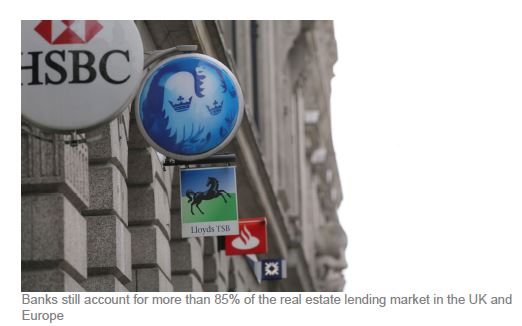Alternative Lenders to the Rescue – Insights from our MD Gareck Wilson


The real estate sector is experiencing its most challenging period since the global financial crisis. Unlike the systemic failures that followed the 2007/08 economic crisis (which were caused by excessive risk-taking, low regulation and high levels of borrowing), the current market stress has its roots in the war in Ukraine, which continues to cause significant global economic disruption.
The war, and the resultant ongoing geopolitical tensions, are adding further stress to a global economy that was already struggling with the legacies of the Covid-19 pandemic and the supply chain problems and inflation it caused.
As central banks implement contractionary monetary policies to address high levels of inflation, borrowers are confronting the stark reality that the prolonged era of near-zero interest rates has come to an end. The convergence of these factors, along with a broad decline in property values, is significantly influencing credit assessments at traditional lenders. This has resulted in more stringent criteria for evaluating debt repayment capacity, reduced loan-to-value (LTV) ratios and increased pressure and demand for refinancing.
Debt funding gap
Due to increased regulatory capital requirements, banks are required to allocate provisions for “higher risk” positions, resulting in a notable retraction among traditional lenders as they seek to limit their exposures and focus on core lending activities.
In Europe and the UK, where banks have maintained their dominance as primary providers of capital for real estate lending – accounting for more than 85% of the market – this contraction has resulted in a significant debt funding gap.

Banks still account for more than 85% of the real estate lending market in the UK and Europe.
For those who witnessed the period between 2008 and 2012, the analysis of the debt funding gap remains etched in memory as a pivotal catalyst that spurred the rise of alternative lenders in the aftermath of the global financial crisis. 2024 is now shaping up to be crucial for refinancing, with industry experts projecting a debt funding gap of €51bn for the period spanning 2023 to 2025 in the UK, France and Germany. This has resulted in additional opportunities for alternative lenders to expand their market share, while capitalising on traditional banks retracting from lending activities.

Amid this wave of opportunity, a growing number of new lenders, including equity investors, are entering the market. They are recognising debt as an attractive investment both on a relative, and in certain instances absolute, basis.
The opportunity for alternative lenders is substantial, as they possess the flexibility to offer a diverse range of structured capital solutions, encompassing senior, whole loan, mezzanine/preferred equity, rescue capital and bridge financing. One notable advantage of alternative lenders lies in their highly experienced teams, boasting extensive expertise in underwriting from an equity perspective – a critical skill when providing capital for development or transitional assets.
Sector-specific opportunities
While the refinancing opportunity has gained significant focus recently, it is equally important to recognise the sustained demand, and even tightening, observed in sector-specific opportunities. Notably, sectors such as student accommodation, healthcare, multi-family and private rented sector, along with transitional assets such as well-located office properties, continue to attract considerable attention and investment.
Conversely, financing availability for assets in secondary locations and of lower quality has been limited, putting them at risk of becoming stranded in the pursuit of higher-quality investments. While alternative lenders have become more active in the UK, Europe, it seems, has been slower to respond to the need for alternative forms of financing. In some cases, transactions have appeared to stall, and this seems to be driven more by some borrowers adopting a wait-and-see approach.

As markets continue to remain mercurial, alternative financing options persist in delivering not only stable returns, but also higher yields compared with pre-existing economic uncertainties. This provides prudent investors with the opportunity to de-risk and diversify their portfolios.
The ever-evolving challenges within our industry not only post obstacles, but also unveil remarkable opportunities – particularly due to the persistent demand for financing. Consequently, as our portfolio steadily expands, we diligently explore a myriad diverse options for active loan management, enabling successful portfolio management. In doing so, we seek to add value throughout the loan life cycle by working closely with both our lending clients and their borrowers.





